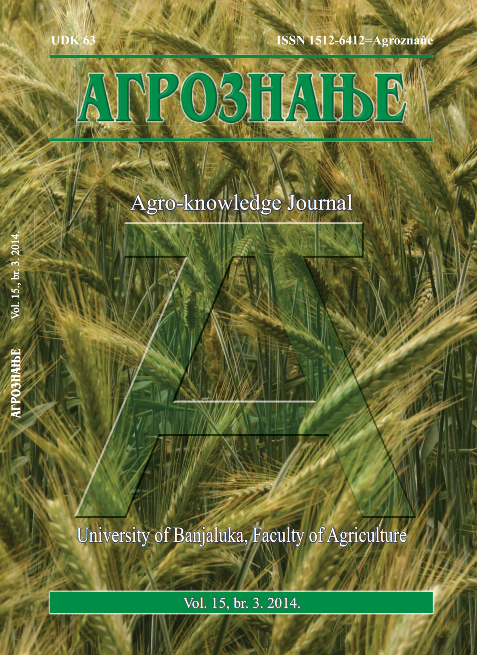Some Quantitative Properties оf Winter Wheat (Triticum aestivum L.)Grown in Meliorated Deposol
DOI:
https://doi.org/10.7251/AGRSR1403255MAbstract
This paperwork presents the three-year research results on impacts of different agricultural practices on the growth and development of winter wheat(Triticumaestivum L.), on meliorated deposol in the process of reclamationin Stanari mine. The aim of the research is to determine the impacts of different doses of fertilizers and varieties to yieldand quality of wheat.Fieldthree-factor experiment was set up according to the randomized block design with four replications. The first factor (A) is year. The second factor(M) is variety. The third factor (K) representsagromeliorative measures fertilizations. Measurement and statistically analysis of plant height, seed yield and 1000 grain weight has been performed. The maximum measured height of wheat plants was 82 cm and average height was 66,2 cm. Maximum seed yield was 6,28 t/ha, with the average 2,66 t/ha. The average value of 1000 grain is 35 g and the maximum value of 44 g. The highest meanvaluesof plant height and seed yield weremeasured at doses of fertilizers N60+40P60K60. The highest mean values of mass of 1000 grain were measured at doses of fertilizers N60+90P60K60. Achieved results show that the winter wheat can be grown on meliorated deposol of Stanari mine overburden disposal.

